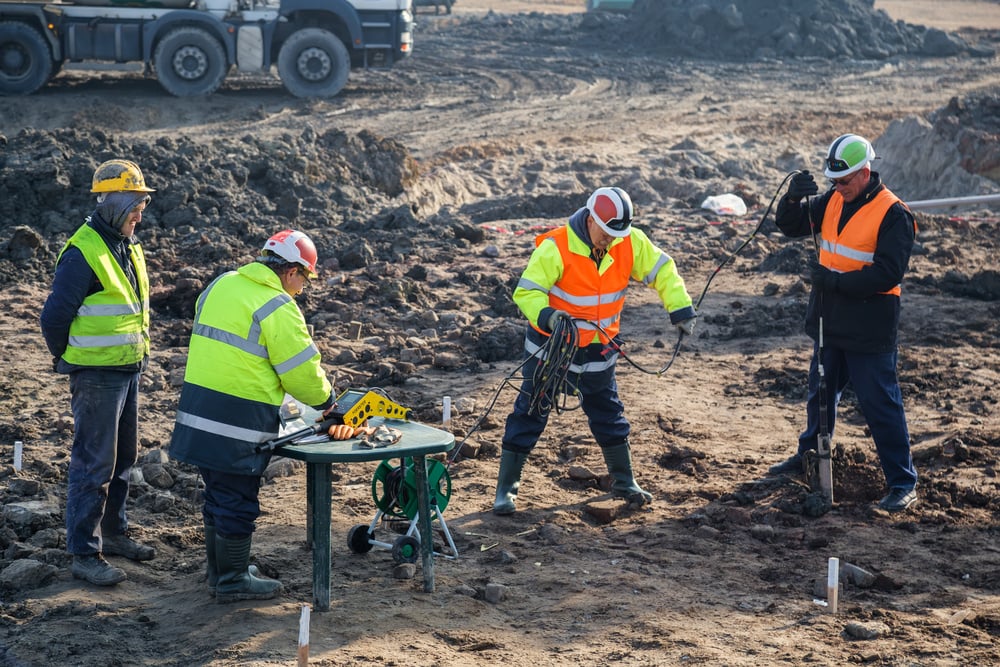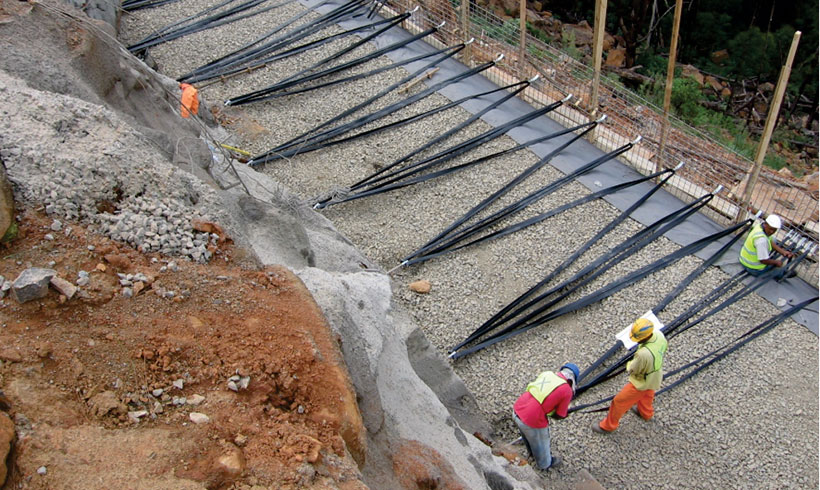The Buzz on Geotechnical Engineering For Construction Projects
The Buzz on Geotechnical Engineering For Construction Projects
Blog Article
What Does Geotechnical Engineering For Construction Projects Do?
Table of Contents6 Simple Techniques For Geotechnical Engineering For Construction Projects8 Simple Techniques For Geotechnical Engineering For Construction ProjectsOur Geotechnical Engineering For Construction Projects DiariesGeotechnical Engineering For Construction Projects - QuestionsGetting My Geotechnical Engineering For Construction Projects To Work
As a result, during the examination, it is necessary to drill at the needed depth and the required variety of holes according to the referral of the Canadian Structure Style requirement. In some cases, the owner might conserve some Geotechnical Investigation expense however end up spending more than the expected throughout the construction cost.The responsibilities of the geotechnical professional involve giving material screening for building and construction assistance. Geotechnical Engineering for Construction Projects. Geotechnical engineers analyse all the field examination reports to make sure that construction is taking place based on the job specification. During building, a confirmatory test for dirt compaction is done on-site to ensure that no future settlement occurs
After the concrete is put -7 days and 28 days- examinations are carried out on concrete samples collected from the website to ensure that the concrete poured fulfills the layout criterion. Asphalt core is taken after the Asphalt is laid and compacted to validate that it satisfies the style requirement. All research laboratory examination reports are analysed by the Geotechnical Engineer to make sure that it fulfills the project requirements.
Not known Incorrect Statements About Geotechnical Engineering For Construction Projects

Geotechnical engineering plays a vital role in making certain the stability of building jobs. Geotechnical design is a vital branch of civil engineering that concentrates on recognizing the behaviour of earth materials, such as dirt and rock.

For a reputable foundation and a smooth building procedure, trust to provide the know-how you require. Call to obtain professional suggestions and geotechnical solutions tailored to your following job.
9 Easy Facts About Geotechnical Engineering For Construction Projects Explained
When getting started on a land advancement project, comprehending the ground under your feet is as vital as the frameworks you intend to construct above it. Our Geotechnical Design team analyse the ground, guaranteeing it is suitable for the recommended growth while supplying you with the information needed to fulfill your task objectives.
Geotechnical Design checks out the formation of the ground, as it is the building blocks for all projects. Where frameworks require to be created with respect to the ground conditions; ground problems (e.g., soft ground) might call for reinforcing depending on the size of the intended structure. Prior to building, you need to know about the groundwater, dirt framework, and liquefaction likelihood of your land.
For websites that are not connected on the regional authority facilities added website investigations would certainly be required to provide technological inputs for on-site stormwater and wastewater. We have actually experienced Geotechnical Designers based in each office, sustaining your geotechnical demands across the country. Connect to us to go over just how we can sustain your next task.
These reports are tailored to satisfy the certain requirements of a job and include style parameters and recommendations for the building of a series of manufactured frameworks. As well as giving consultancy services covering locations such as slope stability and load-bearing abilities for different materials, these engineers embark on research and growth activities to improve methods, equipment, products expertise and evaluation covering whole lifecycles.
The Single Strategy To Use For Geotechnical Engineering For Construction Projects
Rates of pay generally enhance as your understanding and skills grow, with guidelines pointing to a graduate starting wage of between 18,000 and 28,000 per year in the UK. This increases to 26,000 to 36,000 with a couple of years of experience and afterwards reaching 40,000 to 60,000+ linked here for senior, legal or master engineers.
Nonetheless, with the right application it is possible to grasp the profession and gain access to a challenging yet article rewarding and essential career. A geologist would need to retrain to come to be a geotechnical engineer, although there is lots of cross-over between the 2 occupations, which could make this less complicated - Geotechnical Engineering for Construction Projects. Geologists require to have an understanding of dirts, rocks and various other materials from a clinical perspective, while geotechnical designers tale their understanding of issues such as dirt and rock auto mechanic, geophysics and hydrology and apply them to design and environmental jobs
When starting, these engineers will certainly have a tendency to work with much less complicated tasks, accumulating expertise and experience all set for even more difficult job later. Geotechnical designers have a tendency to be experts in particular areas as they expand in experience, concentrating on particular infrastructures such as railways, roads or water. These designers additionally deal with renewable power, offshore and onshore oil and gas, nuclear power, and more.
Things about Geotechnical Engineering For Construction Projects
The time taken to come to be a geotechnical designer depends on where you are based, where you research study and what level of education you want to attain before going into the workplace. Generally-speaking it takes 3-4 years to get to the basic needs to start an occupation as a geotechnical designer.
These operations enable professionals to assess a host of soil mechanics including weight, porosity, void-to-solid bit proportion, leaks in the structure, compressibility, optimum shear strength, bearing capacity and contortions. If the framework informative post calls for a deep foundation, designers will make use of a cone infiltration examination to estimate the quantity of skin and end bearing resistance in the subsurface.
When examining an incline's equilibrium of shear stress and shear strength, or its ability to withstand and undertake movement, rotational slides and translational slides are typically taken into consideration. Rotational slides fail along a curved surface area, with translational slides taking place on a planar surface. An expert's goal is to determine the conditions at which an incline failing could occur.
Frequently, findings recommend that a website's soil ought to be dealt with to enhance its shear strength, rigidity and permeability prior to layout and building. When it comes time to set out foundation strategies, specialists are progressively concentrated on sustainability, more specifically exactly how to lower a foundation's carbon footprint. One tactic has actually been to change 20 percent of a foundation's cement with fly ash, a waste item from coal fire power plants.
Report this page